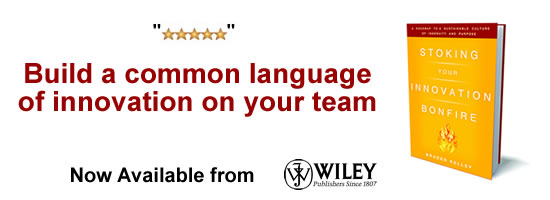How to find the IDEAL problem
 The 12 steps to biomedical innovation starts with being a problem seeker, not a problem solver. Eventually, to be successful, customer problems and solutions need to meld around a VAST business model i.e. one that is not just profitable, but that demonstrates:
The 12 steps to biomedical innovation starts with being a problem seeker, not a problem solver. Eventually, to be successful, customer problems and solutions need to meld around a VAST business model i.e. one that is not just profitable, but that demonstrates:
1. Validity Regardless or which elements of your model you choose, they have to be valid. In other words, the dogs have to eat the food. When the dog won’t eat the food, you’ll have to change your approach and try again.
2. Automaticity At the very start of planning your venture, you should think about how you are going to work on your business, not in it. Reducing hands on time to manage operations will give you more time to lead the company and create strategies for growth and give you more personal time to enjoy the fruits of your success. Outsourcing, automating or using technologies to ramp up operations, sourcing and distribution is a key part of scaling, and something that investors want to see…which brings us to the next piece.
3. Scalability Your business model is primarily a way to create a business machine that can produce an infinite number of products. Think of it as a device that takes in customers and creates profits out the other end and can do so at quicker and quicker speeds.
4. Time and Traction Finally, your model need to create as much profit as quickly as possible with a growing customer base that is loyal to your brand.
Many doctors, scientists and engineers start with solutions looking for a problem. Some find it or, eventually, as their inventions or technology evolves, markets appear to those who have the talent to see them. The more typical model, and one that is more common among the startup community, is to find a problem and devise a solution.
But, how do you pick the IDEAL opportunity given the almost infinite possibilities? Here are some tips:
(I)dentify the problem:Â Seeing a problem is an important skill and core competency of savvy entrepreneurs. It typically is the result of personal experience, primary research talking or watching others or secondary research. Whichever problem you pick, look for ones that:
- Will make a very big difference in people’s lives if you solve it
- Has the potential to be very profitable or create lots of user defined value, typically at least 10x the value compared to existing offerings or the status quo.
- Is something that taps into your passion or satisfies your psychic need
- Anticipates future customer/stakeholder wants and needs
- Has an extremely high level of market pain and frustration, where customers know they have a problem and have unsuccessfully and repeatedly tried to solve it
- Has limited barriers to entry
- Has the right potential risk-return profile that matches yours
- Is not one dominated by incumbents
- Is easy to explain and understand
- Someone is willing to pay enough for your solution so that you can make it profitably
Identifying a problem starts with identifying a customer archetype that has it. Beyond guessing, identifying that person and describing their problem can only be done by talking to, working with or observing potential customers.
Doctors call it taking a pain history and documenting the chief pain complaint, the history of the present illness and their past medical history. In other words, talk to people and have them describe:
- Where is your pain?
- How bad is it?
- How long have you had it?
- On a scale of 1-10, how would you describe it?
- What have you done in the past to make it better?
- What makes it better or worse?
- What other problems do you have that makes the pain better or worse?
- How have you treated it in the past?
- Is the pain constant or intermittent?
- What would you pay to relieve the pain?
Startup geeks call this process customer discovery by “getting out of the building”. Doctors call it making house calls.
(D)efine and represent the problem
Primary or secondary research should give you some idea about :
- Market size
- Market growth
- The competitive landscape
- Where you intend to play
- What you see that others don’t.
Once you have done these things, then you can:
(E)xplore and experiment with possible strategies or solutions and risks involved with each by identifying customer segments and creating a value proposition canvas and a business model canvas
Here’s an into to value proposition design
When you create new value propositions and growth you need to focus on high-value customer jobs. These are not necessarily the most important jobs from your customers’ perspective. They are the most promising jobs from your perspective as a solutions provider.High-value customer jobs are characterized by the following, they are:
- Important: When customer’s success or failure to get the job done leads to essential gains or extreme pains, respectively. Examples are managing the security risk of an ecommerce website, or designing and implementing the strategy at a company.
- Tangible:Â When the pains or gains related to a job can be felt or experienced immediately or often. Examples are traffic during your daily commute, or managing a constantly overflowing email inbox.
- Unsatisfied: When current value propositions don’t help to relieve pains or create desired gains in a satisfying way. Maybe the desired value proposition doesn’t even exist. Examples are the inexistent cure for hangovers, or calorie-free chocolate.
- Lucrative:Â When many people have the job with related pains and gains or when a small number of customers are willing to pay a premium. An example of the former is listening to music on the go. An example of the latter are rare diseases for which customers or insurers are willing to pay a premium.
Here is a list of stakeholders that represent customer segments.
If you listen to or watch customers enough, you’ll be surprised at what you’ll discover. Here are some examples.
(A)ct on a selected strategy or solution
(L)ook back and evaluate
Most businesses fail because 1) they don’t offer the right value proposition-market fit or 2) they don’t have a viable business model. Your business model canvas is anchored on your value proposition. Your value proposition (doing the job the customer wants you to do, removing the pain they have to endure to do it now and offering a product that meets or exceeds customer expectations) starts with understanding your customers. Focusing on your customers or market segments starts with those who touch the problem every day.
Innovation starts with mindset. Part of that way of thinking is being a problem seeker before you try to be a problem solver. Make sure you pick the right problem to solve before you create something no one will buy.
Wait! Before you go…
Choose how you want the latest innovation content delivered to you:
- Daily — RSS Feed — Email — Twitter — Facebook — Linkedin Today
- Weekly — Email Newsletter — Free Magazine — Linkedin Group
 Arlen Meyers, MD, MBA is the President and CEO of the Society of Physician Entrepreneurs at www.sopenet.org
Arlen Meyers, MD, MBA is the President and CEO of the Society of Physician Entrepreneurs at www.sopenet.org
NEVER MISS ANOTHER NEWSLETTER!
LATEST BLOGS
Three things you didn’t know about credit cards
Photo by Ales Nesetril on Unsplash Many of us use credit cards regularly. From using them for everyday purchases to…
Read MoreFive CV skills of a business-minded individual
Photo by Scott Graham on Unsplash The skills listed on a CV help employers quickly understand your suitability for a…
Read More


